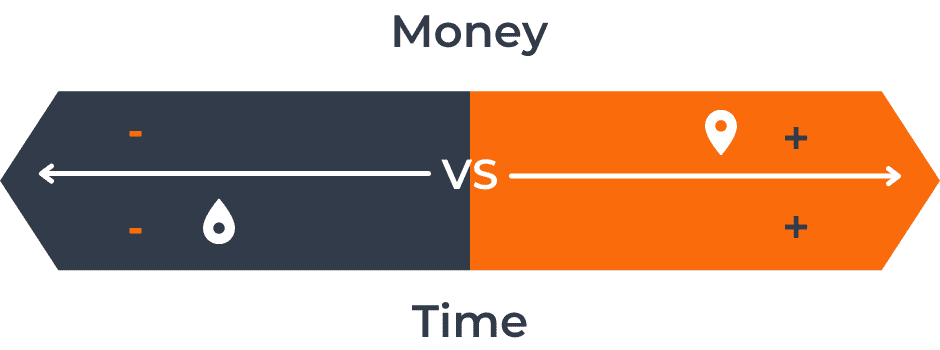1: Open & Register Your Business Entity
Now I know what you’re thinking, and let me stop you right there before we go any further…no, you do not need to have a business entity to make money wholesaling real estate. However forming a business entity and applying for an EIN (Employer Identification Number) will provide legal protection, tax advantages, and allow you to build business credit along the way. Choosing the right business structure for you and your business will be up to you, however, a Sole Proprietorship or Partnership LLC is a good start for those who are newer to managing a business. As you grow your team and generate consistent revenue, you can think about migrating your business into a Corporation.
4: Build your cash buyer & investor list
If you’re like me and my brother when we first started out – we committed all of our time, $$, and resources into acquisitions and finding the right deal. You certainly can FIND money when sourcing a good deal, but you cannot MAKE any money unless you connect the dots between property and qualified buyers. At the end of the day, no buyer means no deal and no $$ back into your business.
I can confidently say that we lost out on tens of thousands of dollars when we first began because we did not have strong enough relationships with the right buyers in our markets. It caused us to move slower, not take as many risks in getting deals under the agreement that ultimately got lost to competition, and forced us to be on the defensive when negotiating with buyers because our options were slim, and we were desperate to just make any $$ on any deal we got under contract.
Which is more important, the deal or the buyer? That is a debate that can rival the age-old question “what came first, the chicken or the egg…” The best answer is you can make money doing both. However, if you want to build a sustainable and successful business to make life-changing money and generational wealth, it’s important to devote time, $$, and resources equally into both Acquisitions and Dispositions.
Luckily – dispo is an easy fix, (and let this be a reminder or warning to anyone who is reading this that is just starting out) network with as many buyers in your market as you can and treat disposition marketing the same as you would with acquisitions. The more buyers you have, the more deals you can move and the more $$ you can make.
Now that you have the framework to get started – your speed to achievement will depend on the amount of time & money you have to invest into your business. The more money you have, the more you can put that money into software, tools, and the hiring of virtual assistants or employees to help delegate tasks in both acquisitions and dispositions. The more time you have, the less money you will have to spend in these areas which can make doing the day-to-day much quicker. If you are in the luxury of having an abundance of both, then you can easily grow to six figures or more in your first year.


One Comment
Good post.